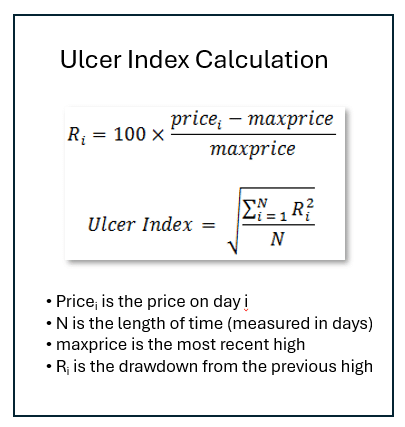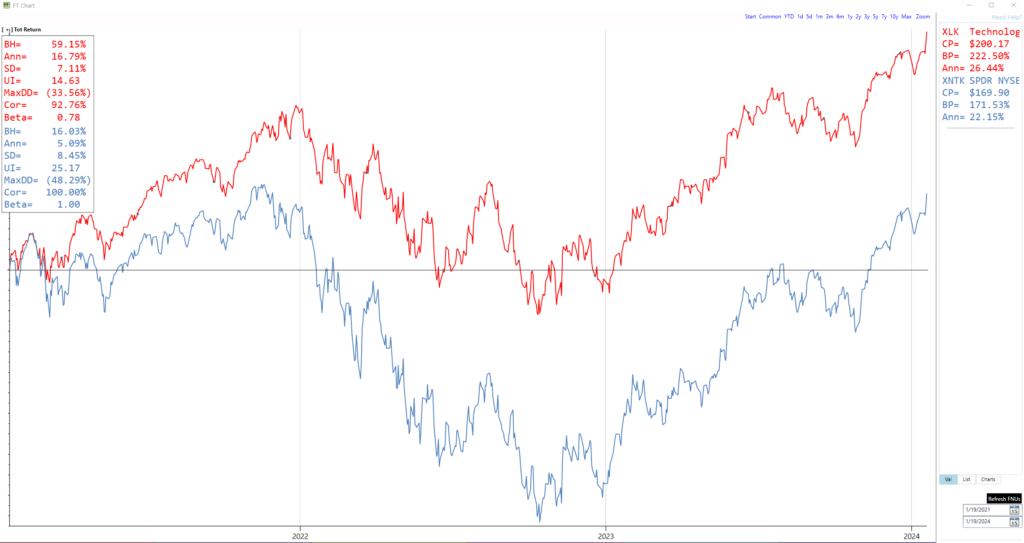When it comes to investing, there are numerous indicators and indexes that try to tell us how risky or safe an investment might be. One such metric that doesn’t get as much spotlight but is super useful is the Ulcer Index (UI).
Created by Peter Martin in the 1980s, the Ulcer Index takes a different spin on measuring risk by focusing specifically on how much an investment’s value drops, rather than just its overall ups and downs.
So, What’s the Ulcer Index Anyway?
Imagine you’re on a rollercoaster that only goes down. The Ulcer Index measures how scary that ride is.
In more technical terms, it looks at how much and for how long an investment’s value dips below its peak over a certain period. The key here is that it zeroes in on the drops, giving more weight to the bigger and longer ones, which can really test an investor’s nerves.
Why Should Investors Care About the Ulcer Index?
- Worst-Case Scenarios: By focusing on downturns, the Ulcer Index gives you a clearer picture of what to expect in the worst-case scenarios. It’s especially handy for folks who are more worried about losing money than missing out on big gains.
- Measures Investment Stress: This index helps you understand the “ouch” factor of holding an investment. Knowing this can help you pick investments that match how much risk you’re willing to take, leading to fewer sleepless nights.
- Helps Compare Investments: The Ulcer Index can be a great tool for comparing how risky different investments or portfolios are. A lower score means less severe dips, hinting at a smoother ride.
- Guides Portfolio Building: Using the Ulcer Index can help you put together a portfolio that aims for good returns without taking you on an emotional rollercoaster. This approach can lead to steadier growth over time.
Boosting Your Portfolio with the Ulcer Index
Incorporating the Ulcer Index into your investment strategy can be a game-changer for your portfolio’s growth:
- Better Risk Management: By picking investments with lower Ulcer Index scores, you can protect your portfolio from big hits during market drops.
- Smart Allocation: The Ulcer Index can guide you in spreading your money across different assets in a way that balances growth potential with peace of mind.
- Performance Check: Beyond just looking at returns, the Ulcer Index can help you evaluate how those returns stack up when you consider the risks you took. This makes sure you’re rewarded for making smart, not just bold, moves.
Consider an investor comparing two exchange-traded funds (ETFs). Fund A has an Ulcer Index of 14.63, while Fund B has an Ulcer Index of 25.17.
Despite a lower Ulcer Index, Fund A has outperformed Fund B due to having smaller periods of decline compared to Fund B, indicating that Fund A could improve portfolio performance while reducing risk.
In essence, the Ulcer Index serves as a strategic tool for investors aiming to make informed decisions, ensuring resilience against the adverse impacts of market downturns.
It encourages a smarter approach to investing, where managing downside risk is just as important as chasing upside potential. Whether you’re starting to build your investment portfolio or you’re looking to refine it, keeping an eye on the Ulcer Index can help you achieve more stable and sustainable growth.
Featured Image by upklyak on Freepik





